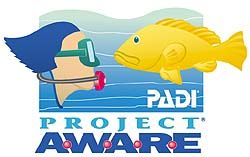Hantu Blog's 3rd Anniversary Dive Part FOUR
25 March 2007
Dive No. 3 - Eyes of the Sunset Reef
Dive Site: Western Patch Reef (Cigar reef)
Location: Pulau Hantu Besar
Visibilty: 3 m
Temperature: 29°C
Maximum Depth: 13.7 m
Actual Bottom Time: 61 mins
Time In: 1712 hrs
We started on the Western Fringing reef and slowly moved north west to reach the Patch Reef. Along the way, Jimmy spotted an Octopus that swooped into a tiny crevice. Debby and I waited patiently for it to emerge but this intelligent creature just hid there motionless, only roving its eyes to check us out.
Dive No. 3 - Eyes of the Sunset Reef
Dive Site: Western Patch Reef (Cigar reef)
Location: Pulau Hantu Besar
Visibilty: 3 m
Temperature: 29°C
Maximum Depth: 13.7 m
Actual Bottom Time: 61 mins
Time In: 1712 hrs
We started on the Western Fringing reef and slowly moved north west to reach the Patch Reef. Along the way, Jimmy spotted an Octopus that swooped into a tiny crevice. Debby and I waited patiently for it to emerge but this intelligent creature just hid there motionless, only roving its eyes to check us out.
 Can you tell the Octopus apart from the substrates of the reef? Look for its Eyes, it is looking directly at you!
Can you tell the Octopus apart from the substrates of the reef? Look for its Eyes, it is looking directly at you!There were lots of giant Mud Reef Gobies (Exyrias bellissimus) darting from hole to hole on the sandy reef. These fishes have large eyes above their head so they are sensitive to movements within their enhanced vision. As with other species of gobies, they are difficult to approach and will dash for the nearest hole when there's sudden advancement.

 The Mud Reef Goby watched the approaching diver(me) cautiously while sifting through the muddy silt for food particles before darting off....
The Mud Reef Goby watched the approaching diver(me) cautiously while sifting through the muddy silt for food particles before darting off....I came across an exposed tail of an unsuspecting fish. Curiosity got the better of me -I had to investigate. I tickled the tail of this fish to encourage it to emerge from the other side. It worked... A pair of sapphire eyes glittered and snared out at me! The fish was complete with 3 venomous spines and barbels. It grinned like an irritated cat before disappearing into a cramped crevice. That was unmistakably an Eel-tail Catfish. It was a pity that I missed capturing that crux moment when the mesmerising blue eyes interacted with me.
Despite their small size, Nudibranchs are among the showiest and the most interesting creatures of the reef. As I have previously introduced, Nudibranchs are sea slugs with no internal or external shell. They are so called Nudibranch because most species have a more or less evident tuft of gills on its dorsal mantle surface like the C. fidelis below. From Greek-latin to English context, Nudibranch is translated as "Naked-gills". You may be surprised to know that Nudibranchs actually have eyes! Their microscopic eyes sit deep inside the body on top of the brain. Although these slugs have eyes, these small black spheres cannot see images and colours of the reef. They are only able to distiguish light and dark which may warn the slug of predators by detecting shadows and are time keepers to help the slugs stay informed of day and night. What they lack in vision, they make up for it in ultra chemo-sensitivity. They have a pair of receptacles with tentacle-like retractable projections called the Rhinophores. Literally translated from 2 classic Greek words: "Rhino" = nose, and "Phore" = carrier. It is an organ of sensory "smell". The rhinophores can pick up scents of food, mates and even of predators.
 Reliable Chromodoris (Chromodoris fidelis) "sensing" the water column for directions to its food sources and mates.
Reliable Chromodoris (Chromodoris fidelis) "sensing" the water column for directions to its food sources and mates.Flatworms have tentacles at the anterior end and often have brilliant colours they are occasionally mistaken for nudibranchs. But in contrast to nudibranchs, tentacles are mostly simple folds of the anterior margin. They can move along much faster than nudibranchs, are much thinner and tend to break up if handled. Furthermore, they don't have special respiratory organs (gills) as respiration is performed by diffusion through the worms entire surface. Polyclads exhibit a wide variety in colour pattern and texture. They have marginal ruffles tending to increase in number with size. Except opaque species which are black or mainly black, most species are transparent and their internal organs can be seen through the epidermis. Especially the ovaries can be bright red or deep purple and can influence the colour of the dorsal surface.

 The anterior cerebrial ganglion knot and its large interneurons resemble the worm's "brain" analyzing nerve signals coming in from numerous photo- and chemosensitive cells which are concentrated mainly on head and pseudotentacles. Additionally, a high number of mechanoreceptors are dispersed throughout the epidermis. Photosensitive cells can be found in the cerebral eyespot where numerous eyes appear to form round clusters. Further eyes are located on the ventral and dorsal pseudotentacles. These eyes are not capable of forming images but are sensitive to changes in light direction and intensity. When flatworms sense bright light they usually retreat to a darker place.
The anterior cerebrial ganglion knot and its large interneurons resemble the worm's "brain" analyzing nerve signals coming in from numerous photo- and chemosensitive cells which are concentrated mainly on head and pseudotentacles. Additionally, a high number of mechanoreceptors are dispersed throughout the epidermis. Photosensitive cells can be found in the cerebral eyespot where numerous eyes appear to form round clusters. Further eyes are located on the ventral and dorsal pseudotentacles. These eyes are not capable of forming images but are sensitive to changes in light direction and intensity. When flatworms sense bright light they usually retreat to a darker place.Compared to vertebrates, the organization of polyclad eyes is quite simple. This type of eye, which lacks any lens, has been described as "pigment cup ocellus". Ocelli are part of the cerebral eyespot and are composed of several photosensitive cells and a concave cup. The walls of the cup contain pigments prohibiting light penetration from three sites. The light sensitive portions of the cells, microvilli, are arranged inside the opaque cup such a way that they can only be exposed by light from one single direction. Depending on the angle of incoming light, shadows fall onto the photosensitive structures. Since the cup can be actively rotated by muscles a quickly changing shadow pattern is generated. Corresponding excitatory nervous signals are sent to the cerebral ganglion where the information is analyzed and used for threedimensional orientation and appropriate behavioral reactions. -Text and Sketches of Flatworm adapted from: Anatomy of Polyclad Flatworms © Marine Flatworms of the World, Wolfgang Seifarth 1997-2002, All Rights Reserved!
 A large Blue-spotted Fantail Stingray (Taeniura lymna) staring at me with its sinister looking eyes, warning me not to provoke it or else...... I thought of Steve Irwin for a moment and decided to ascend instead....
A large Blue-spotted Fantail Stingray (Taeniura lymna) staring at me with its sinister looking eyes, warning me not to provoke it or else...... I thought of Steve Irwin for a moment and decided to ascend instead....Labels: Dive Report





























